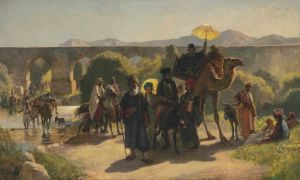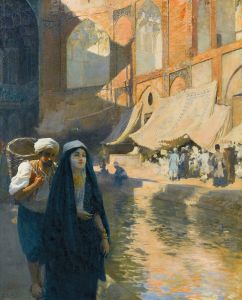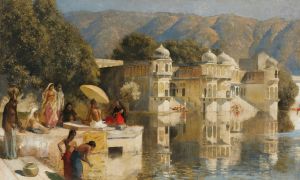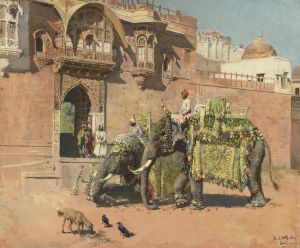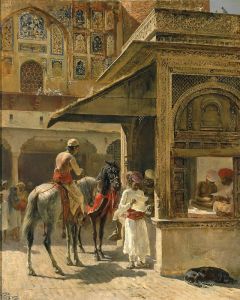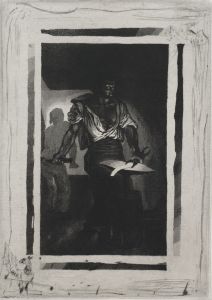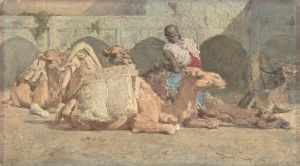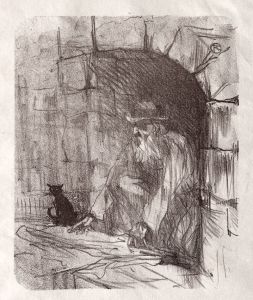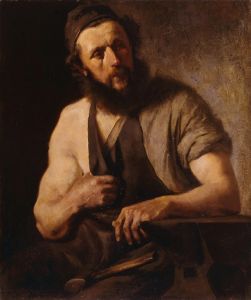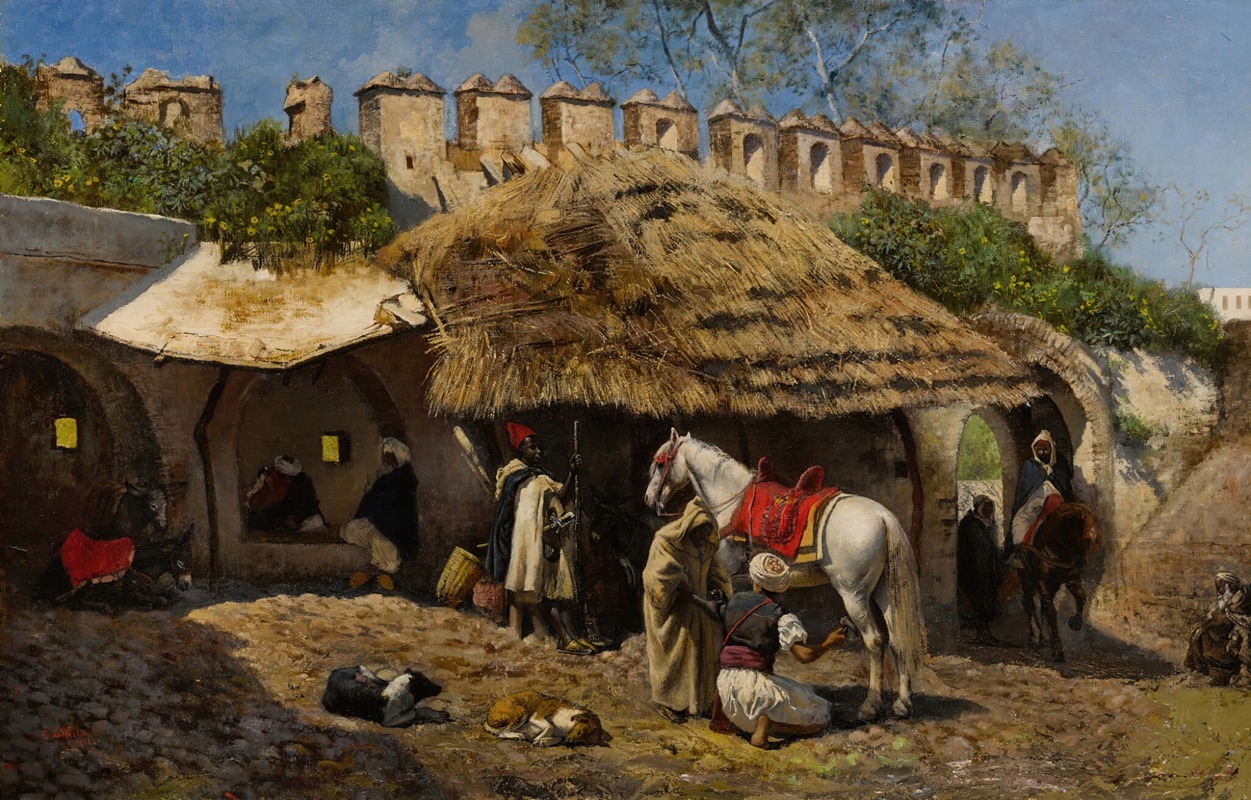
Blacksmith’s Shop at Tangiers
A hand-painted replica of Edwin Lord Weeks’s masterpiece Blacksmith’s Shop at Tangiers, meticulously crafted by professional artists to capture the true essence of the original. Each piece is created with museum-quality canvas and rare mineral pigments, carefully painted by experienced artists with delicate brushstrokes and rich, layered colors to perfectly recreate the texture of the original artwork. Unlike machine-printed reproductions, this hand-painted version brings the painting to life, infused with the artist’s emotions and skill in every stroke. Whether for personal collection or home decoration, it instantly elevates the artistic atmosphere of any space.
Edwin Lord Weeks was an American artist known for his Orientalist paintings, which often depicted scenes from his travels in the Middle East, North Africa, and South Asia. One of his notable works is "Blacksmith’s Shop at Tangiers," which captures a moment in the bustling life of Tangier, a city in Morocco. Weeks was part of a group of 19th-century artists who were fascinated by the cultures and landscapes of the "Orient," a term used at the time to describe regions of the Middle East and North Africa.
"Blacksmith’s Shop at Tangiers" is a fine example of Weeks' ability to portray the everyday life and architecture of the places he visited. The painting typically features a detailed depiction of a blacksmith's shop, with the blacksmith and possibly other figures engaged in their daily activities. The setting is likely characterized by the distinctive architectural elements of Tangier, such as arched doorways and intricate tile work, which Weeks would have encountered during his travels.
Weeks was known for his attention to detail and his ability to capture the light and atmosphere of the locations he painted. His works often include vibrant colors and intricate details that bring the scenes to life. In "Blacksmith’s Shop at Tangiers," Weeks would have used these techniques to convey the texture of the materials in the shop, the play of light and shadow, and the vibrant life of the city.
The painting reflects Weeks' interest in the daily lives of people in the regions he visited, as well as his skill in rendering architectural details. His works are often seen as a blend of documentary and artistic interpretation, providing a glimpse into the world as he saw it during his travels. Weeks' paintings, including "Blacksmith’s Shop at Tangiers," are appreciated for their historical value as well as their artistic merit.
Edwin Lord Weeks was born in Boston in 1849 and studied art in Paris, where he was influenced by the Orientalist movement. He traveled extensively throughout his life, visiting countries such as Morocco, Egypt, Turkey, Persia, and India. His travels provided the inspiration for many of his paintings, which were exhibited in Paris and other cities. Weeks' work was well-received during his lifetime, and he became a prominent figure in the Orientalist art movement.
"Blacksmith’s Shop at Tangiers" is part of Weeks' broader body of work that explores the themes of travel, culture, and the interaction between different worlds. His paintings are housed in various collections, including museums and private collections, and continue to be studied and appreciated for their contribution to the understanding of 19th-century Orientalism.
Overall, Edwin Lord Weeks' "Blacksmith’s Shop at Tangiers" is a testament to his skill as an artist and his fascination with the cultures he encountered. Through his detailed and vibrant portrayal of a blacksmith's shop in Tangier, Weeks offers viewers a window into the life and architecture of a city that captured the imagination of many Western artists during the 19th century.





